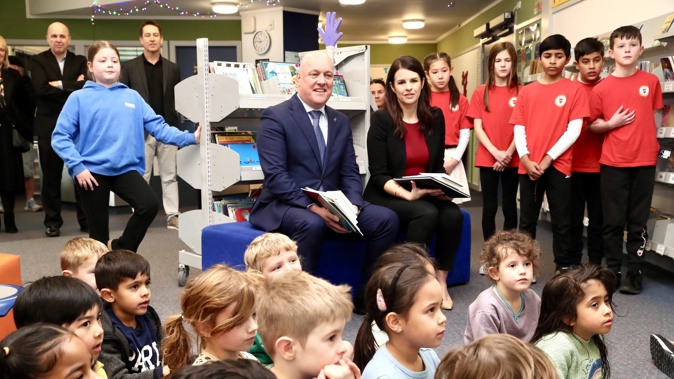
Prime Minister Christopher Luxon and Education Minister Erica Stanford have announced the introduction of standardised testing in primary schools across New Zealand.
Speaking to media during a visit to Silverstream primary school in Upper Hutt, Luxon said education achievement was not meeting expectations.
”Under our Government, that changes,” he said, claiming education reform would be “evidence-based”.
Education Minister Erica Stanford said parents deserve to know how their kids are progressing at school and have confidence they are moving in the right direction.
“That’s why the Government is introducing consistent assessment tools so no matter where you live in New Zealand, parents and teachers will know more about how our young people are learning.”
From 2025, all children in their first year of schooling will have an opportunity to run through a phonics check, to help teachers understand how well a child can read words by sounding out letters.
“This will be done after 20 weeks of schooling and repeated after 40 weeks. It will help teachers identify and arrange additional support for those who need it right at the start of the child’s education,” Stanford said.
Progression monitoring on reading, writing and maths will also be introduced for children in years 3 through 8.
These will be done twice each year and will inform teachers about the next steps needed for a child’s learning.
Stanford guaranteed parents they would know more about how their children were doing at school going forward, regardless of where they lived or what school they attended.
She said it would help teachers identify struggling kids and provide parents with “rich data” regarding how their children were going.
It formed part of the Government’s strategy to get 80 per cent of students “at curriculum” by the time they reached high school.
“That is not our intention at all,” Stanford said, when asked if schools would be pitted against each other based on how well their students were doing.
The coalition Government has made a series of announcement in recent months around education.
This includes plans to bring back charter schools to the New Zealand school system with $153 million in funding for up to 50 new schools. Of these, 15 would be new and 35 would be converted state schools.
There has also been a shake-up of the school lunches programme, which Associate Education Minister David Seymour says will save the country approximately $107 million a year.
 Act leader David Seymour. Photo / Alex Burton
Act leader David Seymour. Photo / Alex Burton
The Ka Ora, Ka Ako school lunches programme, which was launched by Labour in 2019, would be dialled back to no-frills lunchbox basics.
“Students will receive nutritious food that they want to eat,” Seymour said when the programme was announced.
“It will be made up of the sorts of food items thousands of mums and dads put into lunch boxes every day for their kids – forget quinoa, couscous and hummus, it will be more like sandwiches and fruit.”
 Prime Minister Christopher Luxon reads with a student at Silverstream primary school. Photo / Mark Mitchell.
Prime Minister Christopher Luxon reads with a student at Silverstream primary school. Photo / Mark Mitchell.
Julia Gabel is a Wellington-based political reporter. She joined the Herald in 2020 and has most recently focused on data journalism.
Take your Radio, Podcasts and Music with you









